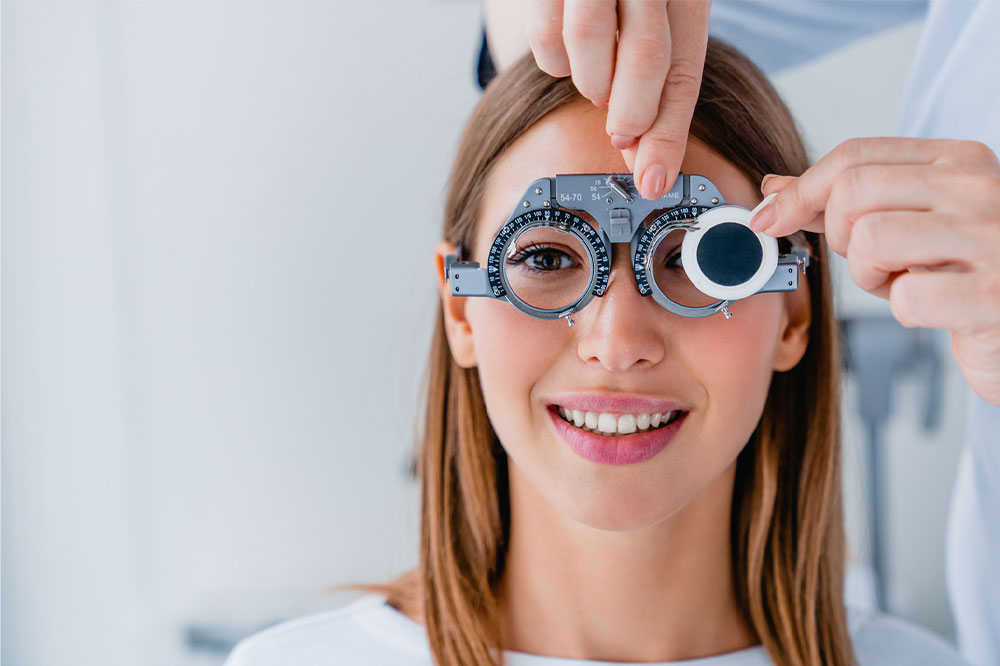Everything to know about eye exams
Optometry, a branch of medical science, deals with the eyes. An optometrist or ophthalmologist has the knowledge and skills to conduct eye, and vision-related tests and accordingly recommends corrective measures, like contact lenses or glasses. They are also specialized in treating specific eye conditions and performing vision therapy to improve eyesight and visual health. The first step is to get an eye examination. Here, we will learn about the types of eye tests performed.
What is an eye exam?
An eye exam consists of several eye tests conducted under differing conditions to check the health of the eyes. It would involve the use of different medical devices to study the eyes in detail, assess vision, and look out for eye diseases.

If you are facing vision-related issues, you must immediately seek help from a licensed optometrist. Adults are recommended to take an eye exam at 40 years of age. It is essential for kids younger than three years to consult with the pediatrician regularly to check the eyes for common problems like cross-eyes and lazy eyes. For adults above 60 years of age, regular eye tests are recommended once a year or two.
What to expect from an eye exam and optometry test
A check-up by the medical practitioner is the first step. You can expect questions about your general health and vision in particular. If you are using glasses or contact lenses, you must carry them. During the exam, the optometrist will measure your visual acuity and eye pressure and conduct a full-scale examination of the inside of the eyes. A drop is applied to both eyes to dilate them.
Different types of tests during an eye exam
Eye muscle test
In this test, your eyes are tested as they follow a moving object. By doing so, the optometrist evaluates the muscles responsible for eye movements.
Visual acuity test
This is one of the most common eye tests. In this case, you are asked to read out alphabets from a screen or Snellen Eye Chart kept at a distance. The height and width of the letters reduce in size when you move down the chart. This helps the optometrist understand the visual power of your eyes.
Refraction assessment
This test helps assess whether your eyes have a refractive error. Refractive error occurs when light waves do not reach the back of your eyes. In most cases, a phoropter is used by the doctor to assess the eyes. After this test, the doctor usually advises eyeglasses or contact lenses depending on the conditions classified as myopia, presbyopia, hyperopia, and astigmatism. At times, the doctor uses retinoscopy to assess the refractive index.
Perimetry
Also called the visual field test, this particular test examines your overall vision field. There are three tests used to assess this condition: manual testing of the eyes; confrontation examination, where you need to cover one eye and look ahead; and automated perimetry, which involves staring at a screen full of blinking lights and pressing a button when you see a light.
Color vision
This test is used to assess if you have any issues in the identification of colors. Dot-pattern tests are conducted, and people with color blindness will face difficulty identifying certain patterns formed by the dots.
Ophthalmoscopy
Also called a retinal examination, the doctor assesses the backside of your eyes. Eye drops are used to dilate the eyes, which helps the doctor check the eyes using either a direct examination by beaming light on your pupil or an indirect exam using a condensing lens and a light source mounted on his head.
Slit-lamp exam
This test is done to diagnose if you have issues like dry eyes, detached retina, glaucoma, cataracts, injured cornea, and macular degeneration. A microscope magnifies the light and focuses the light on your eyes. The doctor can see the front side of your eyes, including the cornea, iris, lashes, eyelids, lens, and the fluid chamber.
Glaucoma tests
Another common eye exam and optometry measure is to check if the optic nerves are healthy or damaged. Tests like applanation tonometry and non-contact tonometry are used to detect problems in the cornea.
Depending on the exact condition of your eyes, family and medical history, and age, the doctor might suggest advanced and specialized tests.

